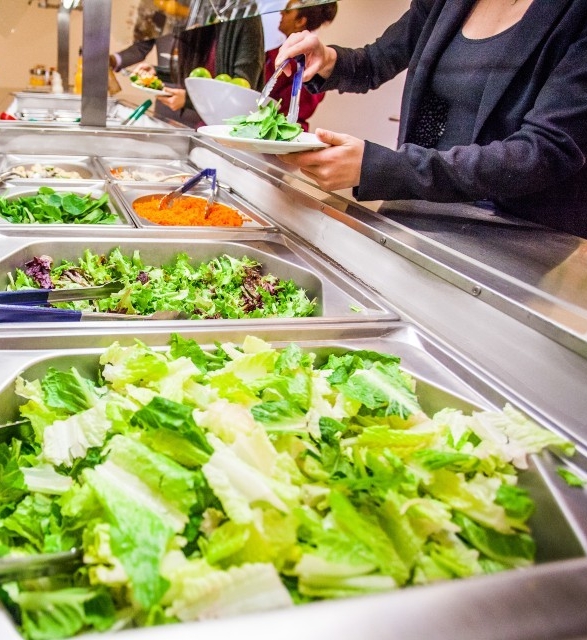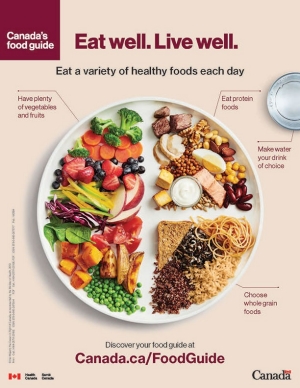Salads are a great way to get plenty of fruits and vegetables into your diet. There are so many ways to make salad; you never have to eat the same thing twice!
Simple salad: chopped leafy greens (e.g., lettuce, spinach) topped with chopped vegetables such as:
- tomato
- onion
- green pepper
- cucumber
- mushrooms, etc.
For a heartier salad, add:
- canned tuna or canned salmon
- cooked chicken cubes
- a few cubes of cheese
- chopped egg (search “how to microwave an egg” for directions online)
- chick peas, kidney beans or other beans
- kernel corn
Add some salad dressing and enjoy. You can buy ready prepared salad dressing (opt for the low-fat or no-fat variety) or make your own:
Basic vinaigrette
A basic vinaigrette combines two parts oil with one part of vinegar (olive oil is high in healthy monounsaturated fats). For a different taste, use other types of vinegar, such as balsamic or raspberry.
Put the vinegar in a jar that has a tight lid (e.g., empty jam jar). Add your favorite spices such as garlic, oregano, rosemary, mustard, pepper, dill or minced onion. Add a little bit of oil and shake vigorously until the vinegar is suspended in the oil. Add more oil and shake again. Repeat until you have integrated all the oil. Refrigerate extra salad dressing.



